In March 2004, a business trip required me to go from Seoul to Montreal. The question was which route to choose. Obviously, I wasn't going to go via Europe... I had time from Friday morning to Sunday evening. Where would I go... it turned out that the choice of the flight route did not impact costs and I had to stay one night somewhere between fligths. So, I dediced to save the company some money and instead of staying in a boring business hotel, I went for a camping trip in a place I had never been before: Hawaii.
I had always wanted to see a live volcano, so after some research I
dediced to go to Big Island and the Hawaii Volcanoes National Park.
It hosts the world's most active volcano: Kilauea, and its current
active part, Pu'u 'O'o vent.
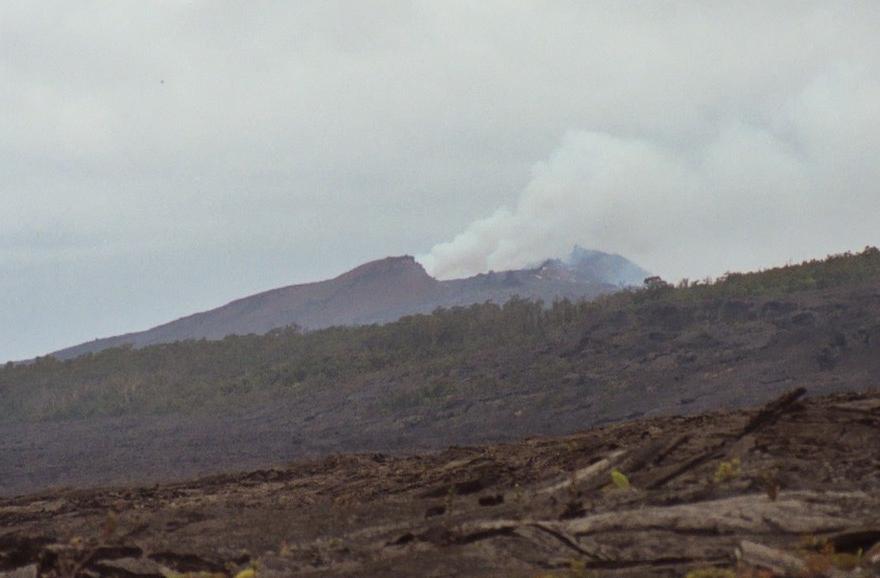
There was one problem, however: time. I had barely 30 hours on
between my flights in and out of Hawaii, and I needed to do an
inter-island flight, rent a car, drive 200 kilometers, buy food, and
acquire the necessary permit from the rangers. On top of that, Pu'u
'O'o is not easily accessible: a 20 mile hike and camping is
required. Luckily, everything went smoothly... and I started on the so
called Napau
Trail. The route runs through old lava fields, and is marked by
piles of stones, or "Ahu".
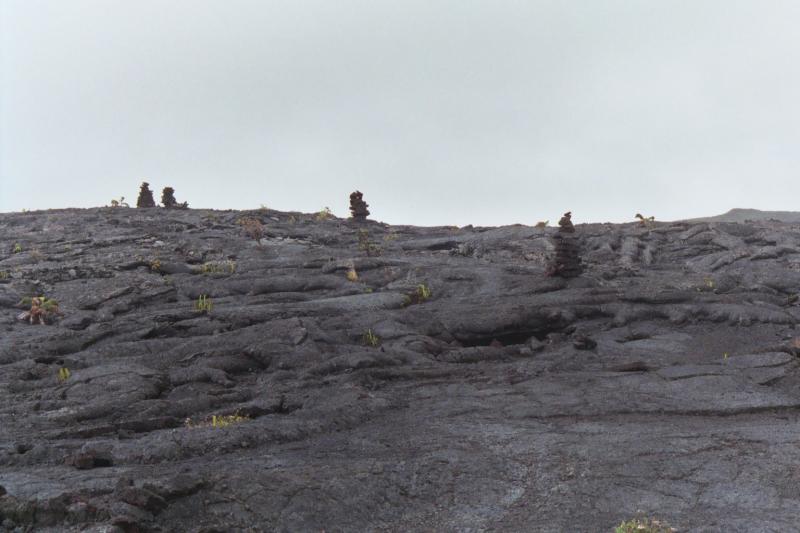
The local names are quite funny, at least for us Finns. Puu Huluhulu is
a couple of hundred years old vent for the underground lava flow that
extends under the Napau Trail from the Kilauea Caldera to the Pu'u 'O'o
Vent.
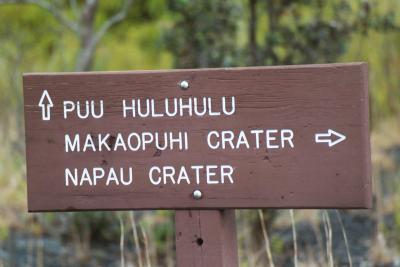
The lava fields have interesting forms. One formation results from trees
left under the red hot lava: the lava "freezes" around the tree and leaves
either a hole or even a high shell when the height of the lava flow
decreases later.

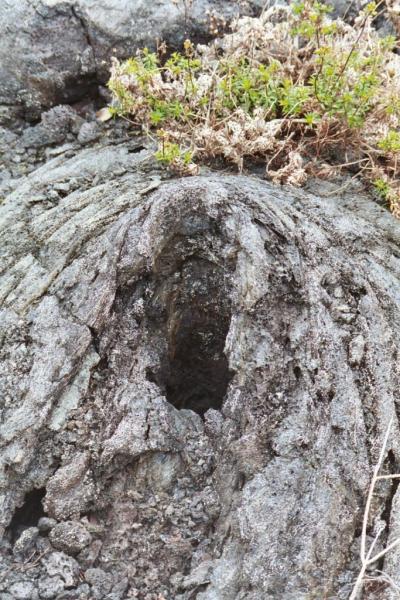
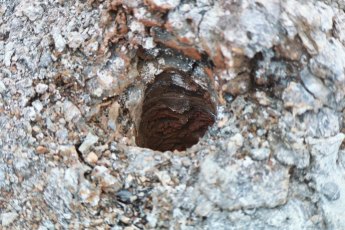

Another interesting lava form are the rivers. (Lava around here is from the
1970s and 1980s.)
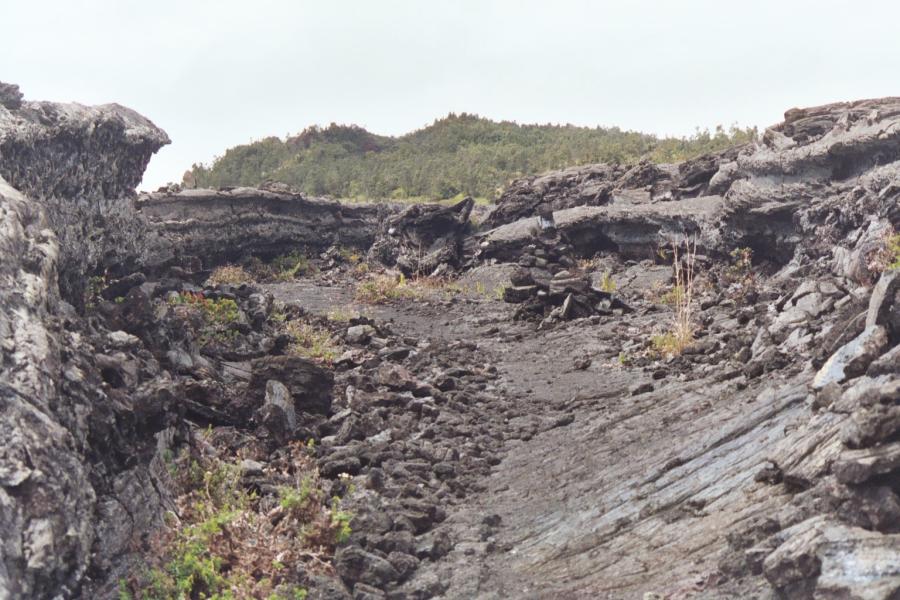
The trail followed a chain of craters, the next interesting crater
was the Makaopuhi crater. The lava on it is from the 1960s.

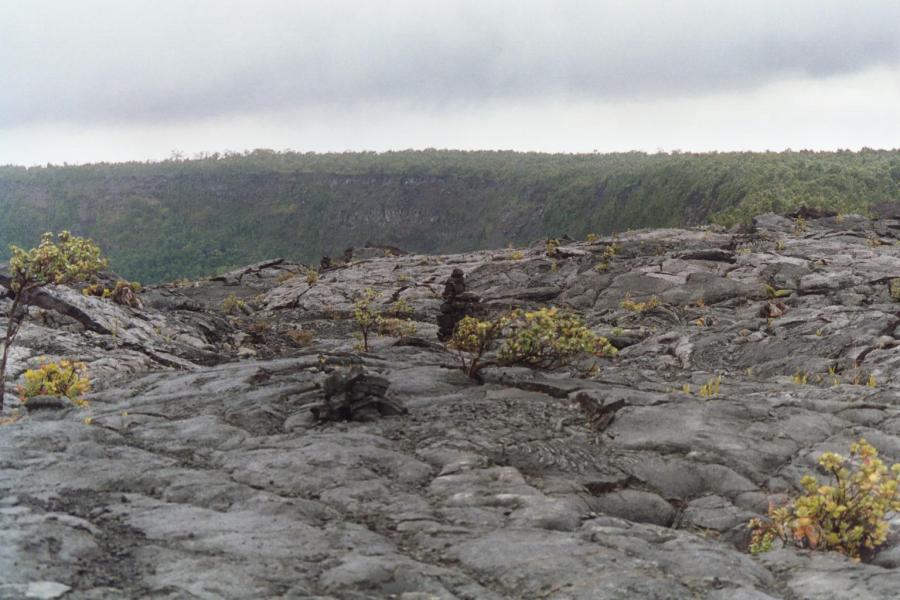
Makaopuhi emits steam and smoke:

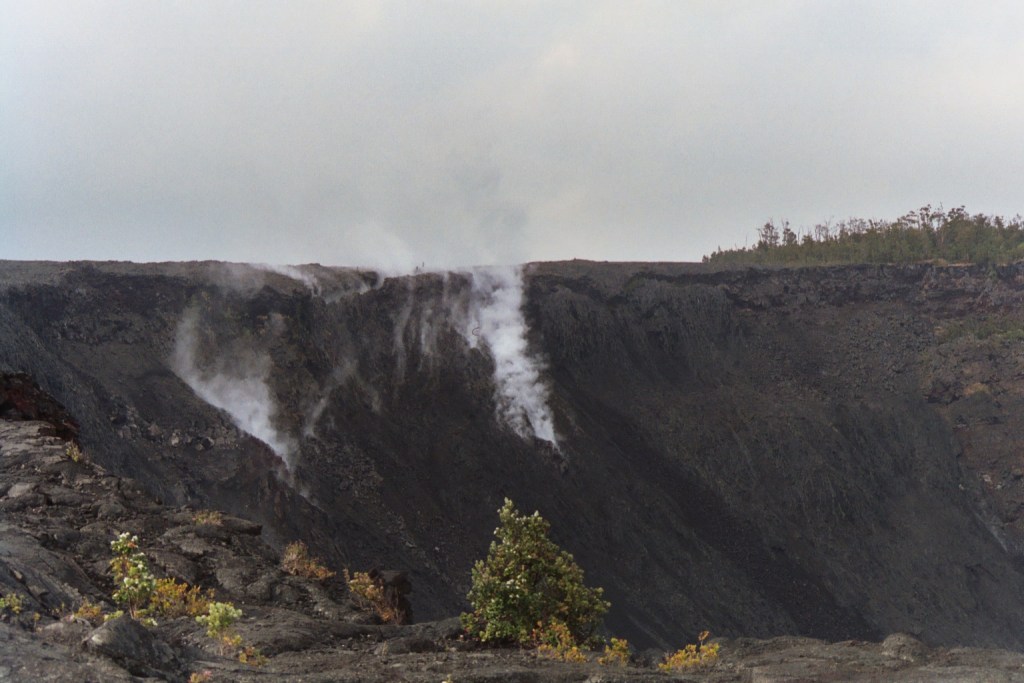
Here am I on the crater rim. Guess how hard it was to put the camera on
a tree for this shot, without a tripod? I had already walked about 5 miles, and
I had seen no one... I was assuming I would be alone here tonight.

The trail went to a rain forest from here on:

The next crater on the trail was the Napau crater. Here I am on its rim, at the
Napau Crater Lookout. Observe the different colors of the lava; the dark one
is just few years old, from late 1990s.
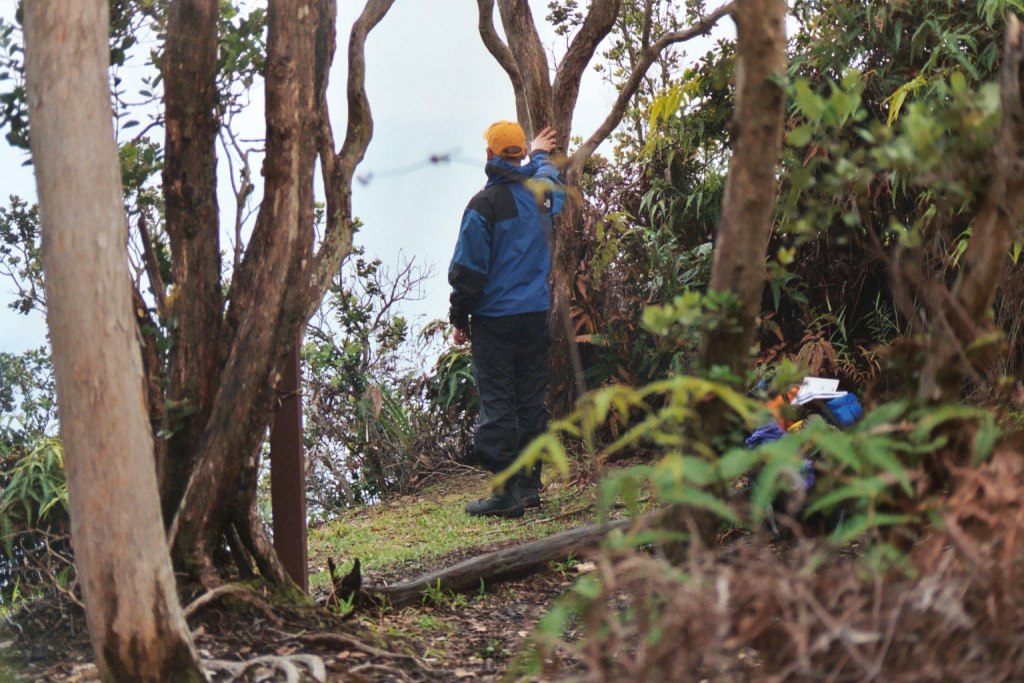
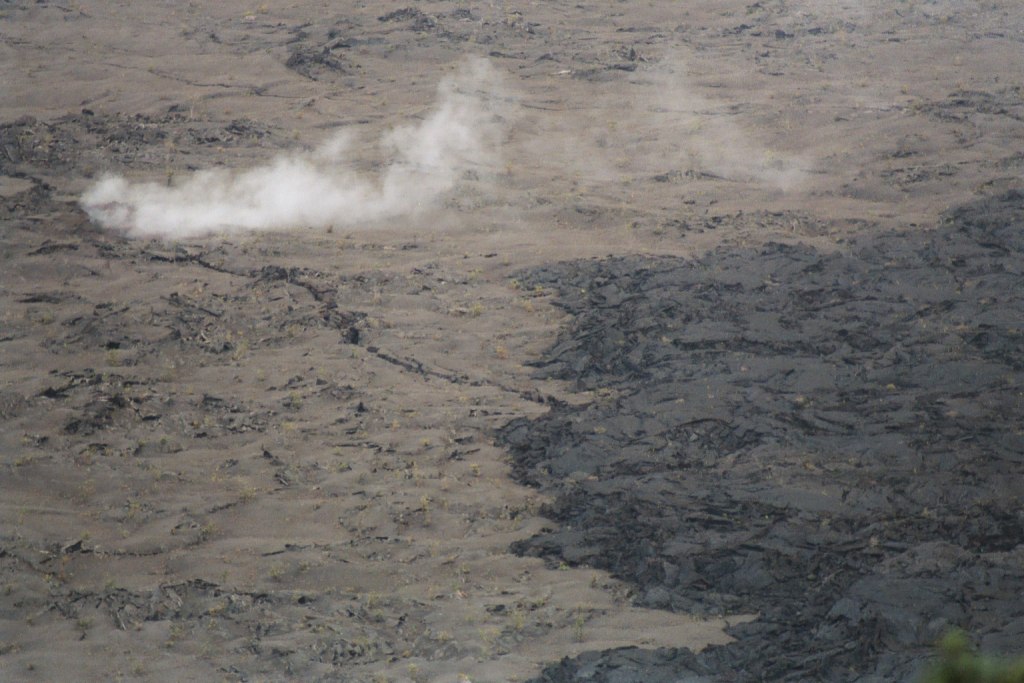
The camp site was near the rim. Or maybe I should say "site" -- there wasn't
anything more than a couple of few sqm2 spots cleared from the jungle for the
tents. Oh yes, there was a very basic toilet as well. Here's my tent 1.3kg el-cheapo
tent that I bought from home one day before the trip. Unfortunately, I was also carrying
sleeping bags, clothes, camera, even my computer as I didn't dare to leave it on
the parking lot, and 7-8 litres of water. The bag was heavy...

From the lookout I could see red stuff flowing from the Pu'u 'O'o vent.
Unfortunately, it was getting dark and I had no tripod... the pictures
weren't usable. The lava was pretty far away, but it created a nice glow
in the clouds above as well. Here's one day shot further away that
shows some reddish ground from the area that the lava was on:
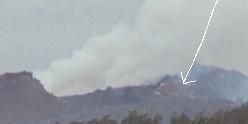
I believed I was alone on this trip, but it turned out that I had some company: a few locals were camping in the site too. I joined them for a nightly walk from the camp to the start of the Pu'u 'O'o cone; another 6 mile roundtrip. No pictures from this trip either... but it was great. We ended up stopping somewhere in the lava field and did not see lava real close. It was dark, there were cracks in the earth with sounds and gases coming out of them, so our guide adviced that its safest to not proceed further. We ended up laying on backs on the desert and watching the red stuff flow higher in the cone.
In our nightly walk, it was a bit scary that after every few
hundred meters one would step on non-solid ground: soft "sand",
or thin layers of lava with nothing under them. Here's a couple
of pictures that show how lava typically does not result in
solid rock:

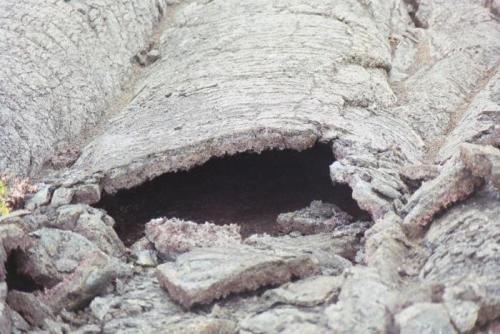
On the way back I took a picture of the area where the rainforest
had not yet fully taken over after a lava flow.

This plant was typically the first to appear on the lava fields:
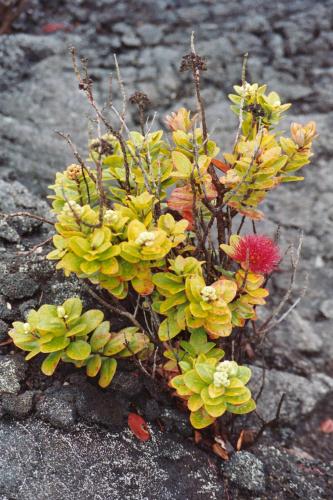
The "pulu" plant that grows in the rain forest had been used around 1850
for the production of pillows (until they realized it turns into dust after
a few years). The remains of the Pulu factory are in the forest.
Pulu is taken from this plant's bottom, by pushing
your hand into its center and pulling out the brown stuff.
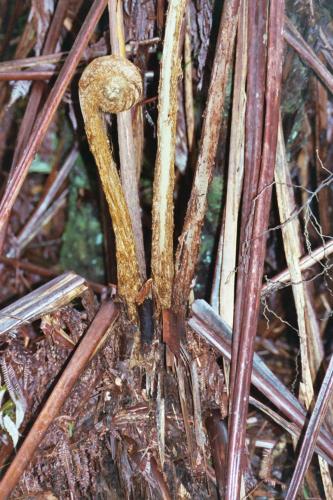

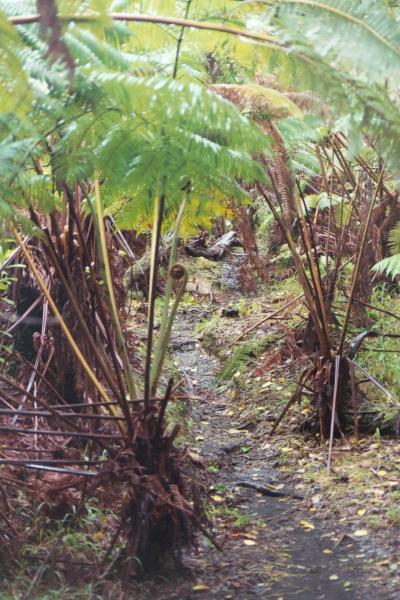
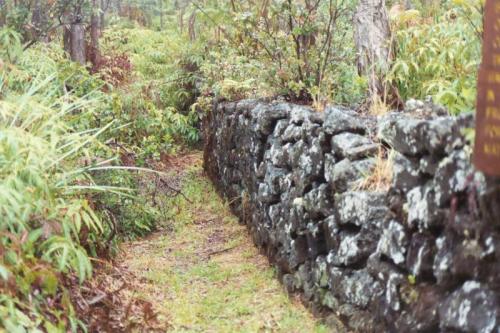
On the way back, it was very clear how some parts of the lava field
were still emitting steam and smoke. Close to our camping site, there
was stuff coming out of the ground. This picture shows the situation
from the lava fields on a clear sunny day. You could also feel the
heat, it was like a sauna.
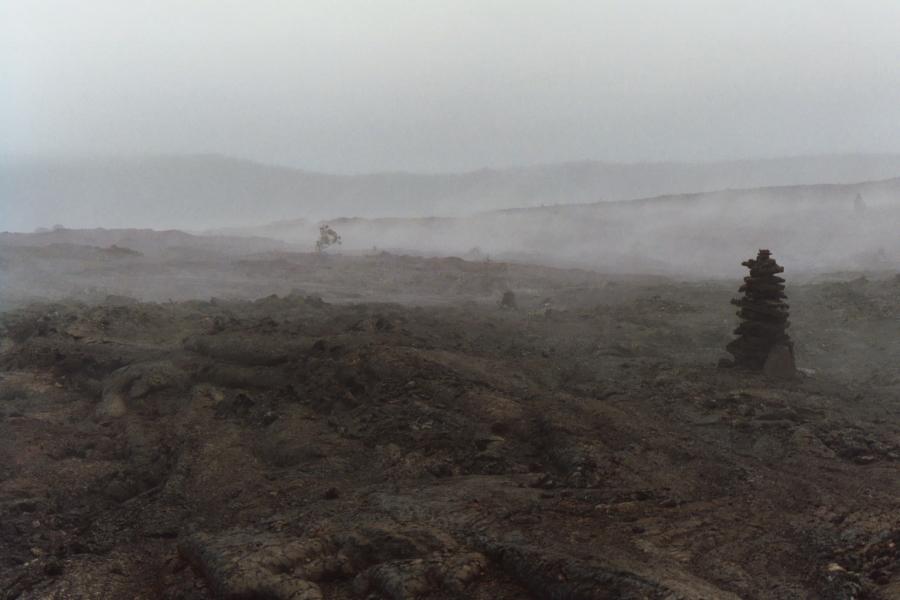
See also other Jari's pictures.